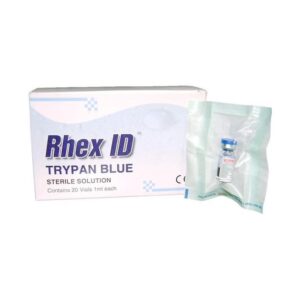TRYPAN BLUE
TRYPAN BLUE: TRYPAN BLUE is a vital dye that is used in ophthalmology for various diagnostic and therapeutic procedures. It is commonly used during cataract surgery to stain the anterior capsule of the lens, aiding in its visualization and ensuring accurate capsulorhexis (a surgical technique to create an opening in the lens capsule). It is also used for staining the internal limiting membrane (ILM) during vitreoretinal surgery.
The mechanism of action of TRYPAN BLUE involves its ability to selectively bind to negatively charged macromolecules, such as collagen and basement membranes. This binding allows for enhanced visualization of the targeted tissues, facilitating surgical procedures.
The recommended dose of TRYPAN BLUE varies depending on the specific procedure. For cataract surgery, it is typically used as a 0.06% solution, with around 0.1 mL injected into the anterior chamber of the eye. During vitreoretinal surgery, a higher concentration (around 0.4%) may be used. The exact dosage should always be determined by a healthcare professional.
Like any medication, TRYPAN BLUE can have side effects. Some common side effects include transient discoloration of the iris, posterior iris pigment epithelium, corneal endothelium, and surrounding tissues. These discolorations typically resolve within a few weeks to months. Rarely, more serious side effects like corneal edema, increased intraocular pressure, or retinal toxicity may occur, but they are quite rare.
It is important to note that TRYPAN BLUE should only be used by trained healthcare professionals and under appropriate medical supervision. Patients should discuss any concerns or potential risks with their ophthalmologist prior to undergoing procedures involving TRYPAN BLUE administration.

